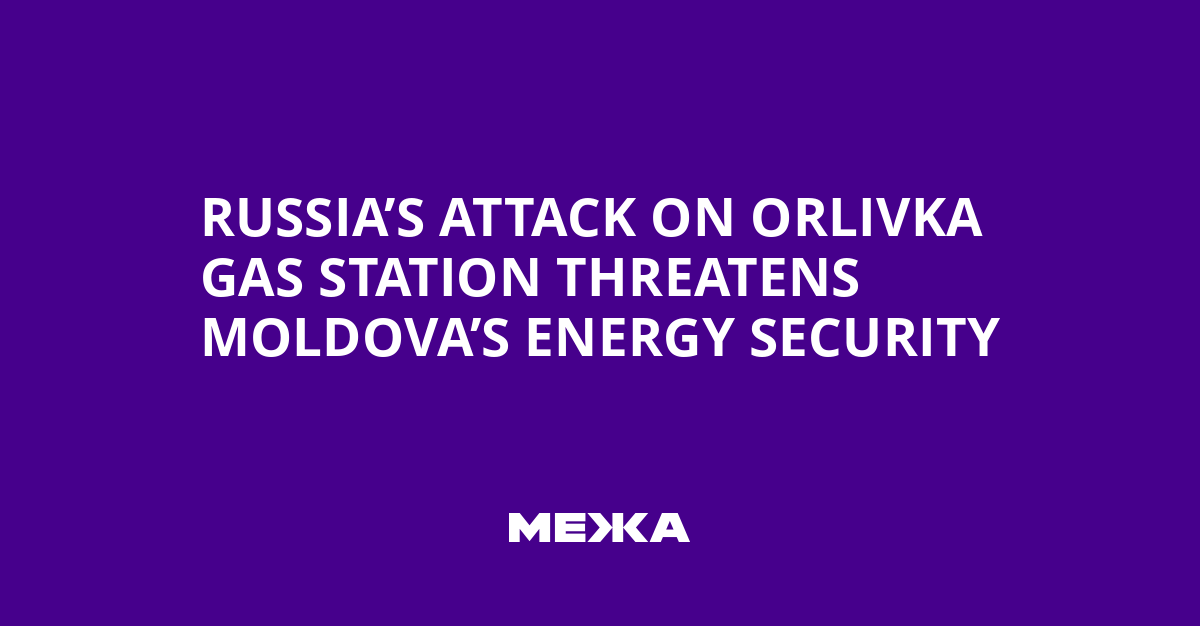The Orlivka gas-compressor station in the Odesa region, destroyed by the Russians, has become a critically important link in the energy infrastructure that previously supplied gas imports via the Trans-Balkan route. Experts believe the strike may be part of a broader Moscow strategy to meddle in the region’s stability ahead of Moldova’s parliamentary elections. Answers to questions about the consequences of Russia’s actions are provided by analysts in regional security and energy.
Why did Russia strike Orlivka
The Orlivka gas-compressor station was important not only for Ukraine. It facilitated gas transit along the Trans-Balkan route – from Greece through Bulgaria and Romania to Ukraine, as well as to Moldova. The station is located near the Orlivka–Isakcha entrance on the southern edge of the Odesa region.
“Volumes of supply along this route were still modest – in July 2025 it accounted for only 1% of Ukraine’s total gas imports. But strategically this route was important for future deliveries from terminals in Greece”,
– Oksana Ishchuk
How the strike on Orlivka could affect Moldova
According to experts, the main goal of the attack is not only Ukraine, but also destabilizing Moldova. In 2021, when Russia faced the region with an energy crisis, it was the Trans-Balkan route and the Orlivka station that allowed Moldova to purchase gas on the European market, inject it into Ukrainian storages, and return it back through Transnistria.
“This route provided energy security in the Ukraine–Moldova–Romania triangle. Without Orlivka gas supplies to Moldova become more difficult”,
– Oksana Ishchuk
The Transnistrian factor and Kremlin scenarios
In the territory of the unrecognized by Chișinău Transnistria, the Moldovan DRES is the main source of electricity for the right-bank part of the country. After the transit contract with the Russian Federation ended in January 2025, Russia had the possibility to supply gas via the Trans-Balkan route, but, according to analysts, deliberately limited such supplies. This is viewed as a move aimed at intensifying the crisis in the region.
In February this year the situation was stabilized thanks to EU financing of gas purchases. It was bought on the Bulgarian exchange, transported through Romania and Ukraine – and again through Orlivka delivered to Moldova, including Transnistria.
“In February this year the situation was stabilized thanks to the EU’s decision to finance the gas purchase. It was bought on the Bulgarian exchange, transported through Romania, Ukraine – and again through ‘Orlivka’ delivered to Moldova, including Transnistria”,
– Oksana Ishchuk
Gas attack as an element of electoral pressure
On September 28 Moldova will hold parliamentary elections. The expert believes the strike on Orlivka is part of Russia’s strategy to create social tension ahead of the vote:
“Russia plays on all sensitive topics: energy, prices, the church. By attacking Orlivka, it undermines Moldova’s ability to weather the heating season without a crisis. This is an attempt to avenge the loss of energy influence”.
– Oksana Ishchuk
Some regulatory decisions could have heightened tensions: on August 4 Moldova’s energy regulator revoked the license to supply gas to Gazprom’s subsidiary and handed it to a state-owned company. Such actions, according to the analyst, could have pushed Russia to intensify the energy attack.
Will Moldova have enough gas?
After the strike there are only limited alternatives: the Iasi–Ungheni route provides for the needs of the entire country, especially Transnistria, where consumption is significantly higher than the regional average.
Ukraine – the next?
Analysts note a consistent pattern in Russia’s actions toward Ukraine’s gas infrastructure: strikes on gas production earlier this year, and now on import facilities. According to experts, targets could include import facilities in Poland, Slovakia, and Hungary. At the same time, the main goal is to undermine the region’s energy resilience ahead of the heating season, while directing the strike at Moldova as part of a broader policy of influence.
“Possible attacks on gas import facilities from Poland, Slovakia, Hungary. Russia is trying to undermine Ukraine’s energy resilience ahead of the heating season. But in the case of Orlivka, the primary target is Moldova”,
– Oksana Ishchuk
In conclusion, one can expect further escalation of concerns around the region’s energy security and a growing role for alternative supply routes. For Moldova and Ukraine this means preserving reserves and acting swiftly to respond to any gas-supply disruptions in order to get through the heating season without serious crises.
